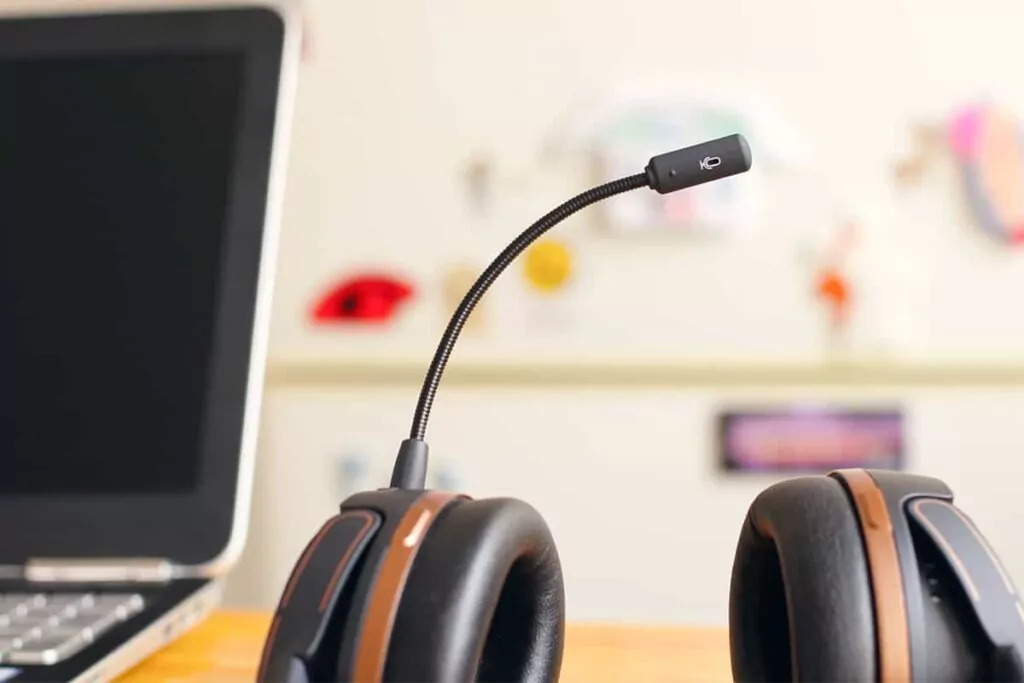Making and receiving calls is integral for businesses, whether it’s contacting clients, supporting customers or simply catching up with colleagues. While today’s digital age has provided us with more options of how to communicate, including video and live chat, the phone still remains the preferred method for many businesses. With 92% of customer interactions happening over the phone, it’s logical for companies to increase and improve their capacity for handling incoming and outgoing calls. They can do this by investing in systems and staff that form specialised call centres.
What is an inbound call centre?
An inbound call centre receives incoming phone calls made to a company by a customer. This type of centre concentrates on receiving and distributing calls, messages and emails, maintaining a customer database and providing customers with support, product and service information.
What services do they provide?
Inbound call centres are probably most associated with customer service and technical support. Typically, they would focus around one or more of these functions:
Sales and appointment bookings
If a business hasn’t invested in a proper online presence or their target market prefers the phone, calling in to book an appointment is still a preferred method for many. This type of inbound call spans a range of businesses and sectors, from restaurants, theatres and GP surgeries to sales appointments.
Customer services and support
You’ve guessed it, when a customer has a problem with a product or service, sometimes nothing can be as effective in fixing it as a phone call. This is particularly the case for complex services, for example insurance and healthcare.
Upgrades
An inbound call centre might also organise upgrades or renewal inquiries for customers who wish to expand their current plan. Subscription services often encourage phone contact rather than self-service upgrades to make up-selling and cross-selling more likely. If this is the case, agents should be trained to understand order and payment processes, as well as light-touch sales techniques to help upgrade customers on to other packages.
Emergency response
The most notable inbound calling or call centre is emergency services. A dedicated number like 999 or NHS 111 is available for all and these calls are always answered and monitored. These calls deal with many issues and the agent goes on to provide and send the right type of care or support.
COVID-19
COVID-19 has seen unrivalled disruption to our daily lives. In a short space of time, we have seen inbound call centres set up across the UK to deal with healthcare questions, testing requests and more.
What is an outbound call centre?
Outbound calls are phone calls made by a representative of the company who contacts a customer or prospect directly. These calls can range from support, upsell and catch-up calls to existing customers or sales calls to prospects. Sales teams typically run these centres, making cold or warm calls and emails, maintaining a prospect database and collecting market research.
What services do they provide?
Lead generation
Outbound call centres can be used to identify, generate and qualify leads. This is done by calling people who might be interested, understanding their situation and identifying any challenges or drawbacks, like timing or budget restraints.
Sales & marketing
Outbound call centres are best associated with sales and marketing calls. Sales reps or agents primarily make calls to reach out and attract prospective clients. Agents will reach out to identify opportunities, collect information and pitch products and services to potential customers, with the aim of closing the deal and bringing in revenue. This can be done via cold calling, emailing those who showed interest on social media or the website and sometimes, referrals from other clients, partners or colleagues.
Market research
Outbound call agents conduct market research to get a better understanding of their customers and competition. This can be done through phone or email surveys, running an analysis on your company and the competition and by interviewing current customers. This research can help companies improve their sales pitches, better their customer service and improve their products and services.
COVID-19
With COVID-19 disrupting the world this year, there’s been a rise in call centres tailored to answering calls and requests related to Coronavirus. Track and trace scans and data have made a huge impact while we’ve been trying to get back to normal again. Many outbound call centres have been set up to contact those who may be infected or are required to have a test.
Need support?
Talk to us today
Contact us
What type of companies use them?
Call centres can be run and used by companies either internally in their own offices or outsourced to external centres. So, what kind of companies or industries use them?
1. Technology
Technology companies receive an influx of inbound and outbound calls, ranging from support and sales to more technical questions. These call centres deal with a range of questions like computer or connectivity difficulties, business software upgrades and booking technicians to install devices.
2. Healthcare
The healthcare industry relies heavily upon call centre technology for their many services, like surgeries, hospitals, emergency services, outpatient care, pharmacies and healthcare hubs. Without a call centre, patients wouldn’t be able to book appointments, fill out prescriptions or call in for assistance during potentially life-threatening situations. Healthcare organisations rely on outsourced call centres to communicate across these many channels, including phone, email, payment processors and more.
3. Finance
Financial services use call centres to keep on top of their day-to-day tasks. From tax services to bank inquiries, most finance companies use cloud-based call centres to manage their heavy workload. If there is a seasonal demand or a crisis, having a call centre set up helps them plan ahead while also controlling call volumes.
Other examples are consultancy, business process outsourcing and entertainment, like restaurants, theatres and PR.

The tools you need for your call centre
Inbound and outbound call centres need strong and reliable technology to empower their agents make and receive calls. The very basics you’ll need are a computer, headset and an internet connection. However, to create a professional fully functioning call centre, you need to invest in intelligent software that covers all calling and communication channels and features.
Contact centre system
Investing in a contact centre system or a CCaaS (contact centre as a service) provides contact centre software without the need for complex hardware or provisioning. Built for the cloud, this software is designed to work with a business’ existing technology and provides the centre and its agents with intelligent software that combines multiple channels. This type of technology also allows your agents to work away from the office instead of in a fixed location – a useful feature during COVID-19. A great example of a basic contact centre system is 3CX.
True CCaaS combines phone, email, social channels, text, LiveChat and more into one system that integrates with a CRM. This is called an ‘omni-channel’ call centre. With a CRM, calls are automatically logged against contacts and agents can see all customer and client details, including contact numbers, products sold and company information. By integrating your CRM to your contact centre system, everything is in one place which reduces average call handling time, a key metric in most contact centre environments.
Hardware
Being able to make and receive phone calls and communications is the most important part of a call centre and it’s vital to have hardware whether you’re physically in the office or working remotely. This covers desktops, desk phones and headsets.
Helpful inbound calling features
A good phone system offers basic calling features and functions, like the ability to hold or transfer a call, call routing, call queues, logging, predictive dialling and more. These features help improve customer satisfaction and experience which is one of the main aims of an inbound call centre.
Skills-based routing
Skills-based call routing is an assignment strategy used to assign incoming calls to the most suitable agent. Similar to call routing or transferring, skills-based routing matches the customer’s inquiry to the best agent based on their expertise. It not only directs customers to the right person, but also enables your organisation to maximise your team’s productivity and efficiency.
Call monitoring & reporting
Having a contact centre system that includes call monitoring and reporting features helps managers assess and check on progress and performance from each team member. This allows managers to ensure agents are hitting their KPI’s, whist also ensuring they are answering customers within an SLA. Managers can also listen in, whisper and barge into calls if an agent needs assistance, or to provide training remotely. While this is also extremely valuable for outbound calling, inbound is just as important to check that customer service is up to standard.
IVR
Interactive Voice Response (IVR) or IVR technology is an automated system that answers incoming calls and provides instructions to customers who are making the calls. This is done via a telephone keypad or by speech recognition, and helps customers phoning in to identify who they need to speak to and then routes the call to the right team. A helpful feature of an IVR is Screen Pops. When an inbound number is recognised, the agent’s desktop can ‘pop open’ the customers’ records and see their details and last correspondence. If an inbound centre receives and handles large volumes of calls, having an IVR in place saves valuable time for both the customer and the team.
Live Chat
Companies aim for a “frictionless” approach, providing customers great marketing, sales and support experiences. This means that the quicker the customer can get the answers to their questions, the quicker the company can provide value to the customer. Live chat is becoming ever more popular as it decreases friction in the buying and support process for customers. Chatting to agents on a website is often more efficient for smaller problems and queries than phone calls, leaving phone-based agents free for more complex issues. Integrating live chat with a CCaaS system can give you the ability to turn a chat into a voice or video call seamlessly, even further decreasing friction.
Helpful outbound calling features
Click-to-call
In an outbound call centre, you’re making direct contact with clients every day. Click-to-call is a handy calling feature that allows your team to click on a phone number in any CRM, chat or website and place an outbound call immediately. This makes reaching out more efficient, reduces dialling errors and saves time.
Data import
While a CRM is arguably one of the most important features for call centre software, you need to make sure this tool has constant up-to-date information. Giving your agents the ability to easily import and export lists for leads, prospects and clients means your team is always updated with what’s going on and what stage a client is in.
Call whisper and barging
Similar to call monitoring above, call whisper and barging are useful features, both for your current outbound calling team and for training new starters. Managers can listen in to a sales call and whisper suggestions to them without the customer hearing. With call barging, you can even jump into the call and take it over – very useful for those difficult conversations. These features help the team evaluate their calling or sales techniques and improves their pitching skills for future calls.

How do we have both: A hybrid call centre
As we’ve established, inbound and outbound call centres have different purposes, technologies and business impacts. However, if your business could benefit from both, you can create a hybrid call centre that combines both inbound and outbound calling.
Most businesses run a hybrid call centre. Although most calls are inbound, there will still be opportunities to dial out when a customer emails in and a conversation over the phone will be a more efficient way of handling the request.
In this type of centre, agents are responsible for both making and receiving calls, centralising both processes into one channel. Hiring agents for multiple roles is a huge benefit to your call centre. For employees, this helps keep the work fresh and add variety to their working day. Having a strong team of people who understand and can handle both inbound and outbound calls means they expand their knowledge of the business and are better tailored to both customers and prospects.
A hybrid centre creates a positive and consistent experience for both customers, clients and the business itself. Hybrid call centre software encompasses all inbound and outbound communications across all channels. As all the communications are managed in one location, it’s an easier, more time-saving and cost-effective way to communicate across all channels.
Want to make the switch to VoIP?
Chat to our team today to find out if our VoIP and hosted phone systems can help your business communicate better.


